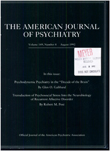Predictions about new long-stay patients: were they valid?
Abstract
During 1979-1989, the long-stay population in Massachusetts state psychiatric hospitals declined and then moderately increased, although to far below its initial 1979 level. The increase toward the end of the period was due to a growing number of patients admitted, an increase in the proportion of these new patients who were retained for 1 year or longer, and a decrease in discharges of long-stay patients, especially those hospitalized for 20 or more years. The last factor was particularly important and was due to the fact that the number of these very-long-stay patients had become so small by 1983 that the effect of their continued discharge on the total long-stay population was minimal. The authors point out that more community services, not more hospital beds, may be needed. They recommend that states assess the clinical needs of the long-stay population before determining how to allocate their resources to address this phenomenon.
Access content
To read the fulltext, please use one of the options below to sign in or purchase access.- Personal login
- Institutional Login
- Sign in via OpenAthens
- Register for access
-
Please login/register if you wish to pair your device and check access availability.
Not a subscriber?
PsychiatryOnline subscription options offer access to the DSM-5 library, books, journals, CME, and patient resources. This all-in-one virtual library provides psychiatrists and mental health professionals with key resources for diagnosis, treatment, research, and professional development.
Need more help? PsychiatryOnline Customer Service may be reached by emailing [email protected] or by calling 800-368-5777 (in the U.S.) or 703-907-7322 (outside the U.S.).



